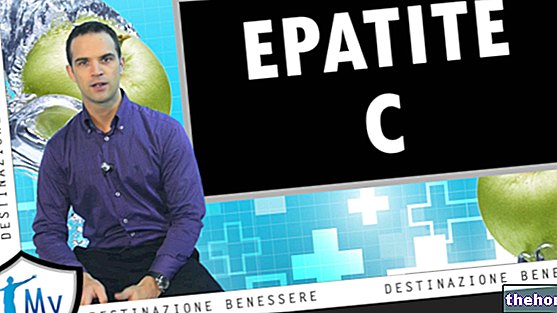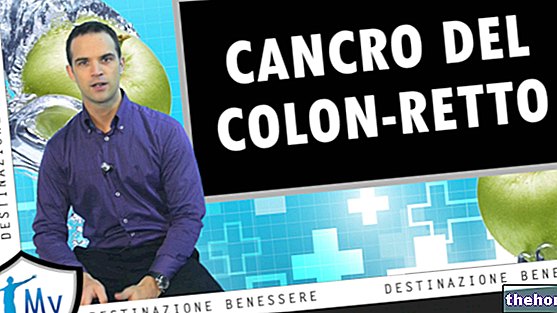Today's video will focus on the famous FOOD INTOLERANCES, but will specifically ONLY deal with those that can be diagnosed.
Food intolerances are NOT DISEASES, rather, they are defined as PARTICULAR PHYSIOLOGICAL CONDITIONS. This is justifiable by the fact that, if NOT exposed to the TRIGGERING agent, the intolerant organism remains perfectly in BALANCE.
This distinction is very important to understand that, in itself, an intolerance "should NOT" predispose the body to DEADLY PATHOLOGIES (such as tumors) ... however, in the long term, ignoring the symptoms could lead to the onset of some negative effects NOT entirely negligible.
Food intolerance manifests itself as an ADVERSE REACTION of the body to a food, or rather, to one of its NUTRITIONAL COMPONENTS.
This RESPONSE of the ORGANISM ... so to speak "ambiguous" ... is NOT caused by an OBJECTIVELY TOXIC MOLECULE, as could be the CYCLOPEPTIDES and the MUSCARINE of a mushroom, the CYANIDE of bitter almonds, the SOLANINE of the potatoes or the OXALATES of the spinach; it is instead caused by a NUTRITIONAL COMPONENT towards which the body (in NORMAL conditions) should NOT show any form of hypersensitivity.
However, LIKE TOXIC reactions, food intolerances are also of the DOSE-DEPENDENT type! On the contrary, food ALLERGIES are NOT dose-dependent and their triggering involves the release of IMMUNOGLOBULIN E.
In the table shown here on the slide it is possible to note the COMMON aspects and the DIFFERENCES between food intolerances, intoxications and allergies.
Food intolerances are NOT all the same and a real CLASSIFICATION has been adopted to distinguish them. This provides for the distinction between: ENZYMATIC intolerances, PHARMACOLOGICAL intolerances and NOT DEFINED intolerances. The enzymatic ones are caused by the lack of a specific DIGESTIVE ENZYME, such as intestinal LACTASE for the digestion of lactose.
Pharmacological drugs, on the other hand, are caused by exposure to two TYPES of molecules: the first is that of VASOACTIVE AMINES; among these we mention: HISTAMINE, TIRAMINE, DOPAMINE, EPINEPHRINE and 5 HYDROXY-TRIPTAMINE. The second is that of FOOD ADDITIVES, such as: BENZOATES, NITRITES and SALICYLATES.
In the image on the slide, taken from the MEDI-CARE CLINICAL NUTRITION MANUAL text, we find schematically the COMPARISON between the various ADVERSE REACTIONS TO FOODS.
Finally, I think it is important to underline the conceptual DIFFERENCE between: TOXIC REACTION, and TOXIC symptomatology, which SEEM to be synonymous but are not at all! A toxic reaction, as we have already said, is the body's response to an OBJECTIVELY harmful agent; on the contrary, a toxic symptomatology can also be defined as that of lactose intolerance, since (even being caused by a deficiency of lactase, and not by the ingestion of a harmful molecule) it manifests itself with GASTRO-INTESTINAL signs of the type DOSE-DEPENDENT.
Food intolerances REALLY diagnosable today are mainly two: lactose and celiac disease (or gluten intolerance to gluten).
Lactose intolerance is enzymatic, since it is based on the lack of a SPECIFIC factor responsible for the intestinal digestion of this disaccharide. There are various types, caused by very different factors. In any case, for all those who suffer from it, by taking lactose in the diet this accumulates in the colon and is fermented by the physiological bacterial flora, activating the symptoms that we will describe in the next slide. The diagnosis of lactose food intolerance can be made in different ways, but the GOLD-STANDARD test is certainly the BREATH-TEST thanks to its ease of application, the absence of invasiveness and the cost-effectiveness of the procedure. This is done by administering a portion of lactose and examining, at predetermined intervals, the gases exhaled by means of pulmonary ventilation; an excess of hydrogen ions indicates an excessive intestinal bacterial fermentation and therefore the positivity of food intolerance. ... in any case, to learn more about the subject, I suggest you consult our video entitled INTOLERANCE TO LACTOSE!
Celiac disease, on the other hand, is a rather ambiguous food intolerance. It has multifactorial causes and above all the mechanisms: AUTO-IMMUNE and GENETIC-HEREDITARY seem to be involved. It also manifests itself in MANY DIFFERENT ways and, unlike lactose, it also involves triggering the immune system. Be careful though! The IMMUNOGLOBULINS E typical of food allergies are not involved, but rather the IMMUNOGLOBULINS G and A. In celiac disease, the balance of these antibodies is COMPROMISED due to the exposure of the intestinal mucosa to gluten. Then, in addition to the alteration of the aforementioned parameter, both INFLAMMATION and EDEMA of the mucosa arise, which cause a real flattening of the intestinal villi. Today, the diagnosis of celiac disease is mainly performed with the DOSAGE of antibodies G and A, without resorting to intestinal biopsy (instead preferred in the past).
The symptoms of food intolerances are mainly of the INTESTINAL type, that is: DIARREA, FLATULENCE, PAIN and ABDOMINAL DISTENSION. Less frequent GASTRIC reactions follow such as NAUSEA and VOMIT, while the EXTRA-DIGESTIVE manifestations (actually quite rare) appear essentially in the ATYPIC forms of CELIAC DISEASE.
Let's make a final observation on the possible complications due to food intolerances. These mainly affect the absorption of nutrients in the intestine; in fact, both in lactose and gluten intolerance, there is a reduction in the ability to CAPTURE the molecules of digested foods, even if in a different WAY and to a different extent.
In lactose intolerance, malabsorption is transient, that is linked to the specific event of diarrhea and / or vomiting ... EVEN if, mainly eating breast milk, in newborns the symptoms are CONTINUOUS and this can give rise to a real GROWTH DELAY. Malabsorption is therefore linked to the SYMPTOMS of lactose intolerance, and not to the actual triggering cause.
On the contrary, in celiac disease, the continuous exposure to gluten, in addition to being able to cause the symptoms mentioned above, determines the ALTERATION of the intestinal mucosa. This means that, even in the absence of diarrhea and / or vomiting, the celiac is still POTENTIALLY at risk of chronic malabsorption (among other things, PERSISTENT until the intestinal villi are restored)! For this reason, the ATYPIC and SILENT forms (ie those without diarrhea and / or vomiting) are to be considered those MOST responsible for the chronic malabsorption caused by celiac disease.
Finally, remember that food intolerances are NOT curable, although it is possible to AVOID the symptoms and complications we have already talked about THROUGH the application of the so-called EXCLUSION DIET. As can be deduced from the name, this diet is based on the AVOIDANCE of NON-TOLERATED molecules, or (with the due differences related to the type of intolerance) on their intake in practically HARMFUL DOSES. In the case of celiac disease, gluten must be COMPLETELY eliminated, while in lactose food intolerance it is possible to take sugar in sufficient quantities to avoid diarrhea and / or vomiting.



























